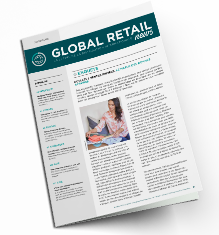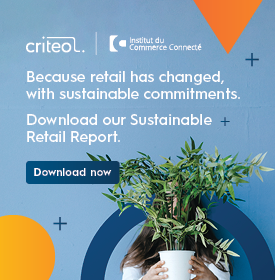Amazon is the world’s 4th largest retailer by sales

The 22nd edition of the “Global Powers of Retailing” survey from Deloitte showcases how the 250 biggest retailers performed in 2017. If U.S. traditional players remain the world’s behemoths, Amazon is about to jump on the band waggon.
In 2017 (including fiscal years to June 2018 for some firms), sales of the 250 largest retailers accelerated to +5.7% (adjusted for currency valuations) to US$4.53 trillion. However, net profit margin dropped to 2.3% of sales as competition increased. On average, international sales drove 23.6% of revenue. Within the “Top 10”, U.S. retailers occupy 7 slots. In 2017, retail revenue of the “Top 10” grew by 6.1% whilst net profit margin dropped to 2% of sales (-1 point). 25% of their revenue came from outside their home country, with very diverse contributions by firm (59% of sales for Schwarz compared to 25% for Wal-Mart and Costco).
Four times the size of any rival with a global revenue of US$500 billion, the U.S. giant Wal-Mart (n°1) is involved in a bold and radical shift. The Group’s biggest profit and revenue engine is still 4,600 cavernous U.S. stores offering fresh food within 10 miles of 90% of the U.S. population. Wal-Mart has reduced inventory, raised wages and invested in pick-up services with click & collect facilities. To attract younger and richer customers, store profits have been reinvested into online technology via a series of smart acquisitions of online retailers like Jet.com, Shoes.com, Mossejaw and Bonobos, followed by the Indian giant Flipkart.com in 2018 for US$16 billion, as the largest deal to date. More than anything, Wal-Mart has found its stride with a fast-growing online grocery business, helped in large part by the massive consumer adoption of ‘click-and-collect’ in the U.S. For the full year 2018, targets of online sales are up by 40% in the U.S. Wal-Mart is poised to capture 4% of all online retail spending in the U.S. (totalling US$20.9 billion) compared to 48% for Amazon.
Costco, the membership warehouse club giant (n°2) also showed an interesting recovery. 2017 sales were up by 8.7% from +2.2% in 2016. This was driven by healthy like-for-like sales up by 4%, higher online sales and new territories like France and Iceland. The group widened the range of online products and introduced same-day grocery delivery from its U.S. website via a partnership. This is with ‘Instacart’, a start-up delivering groceries from multiple retailers (see Global Retail News, April 2016). In the last quarter of 2018, Costco’s online sales jumped by 26%. The group is developing a 1st Chinese physical store in Shanghai, based in the Minhang district for 2019 and in Pudong for 2021).
Ranked at n°3 by size but only active in the U.S.,





